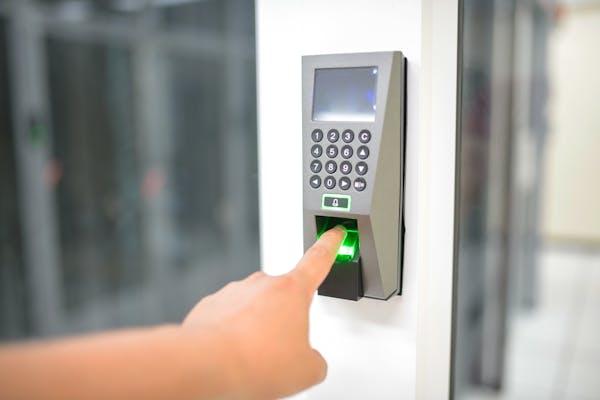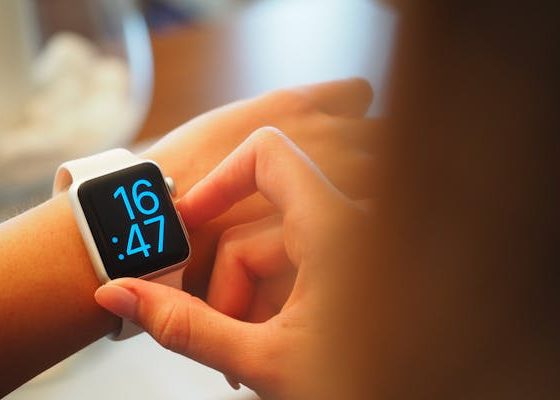 Type
Type
In the rapidly evolving landscape of digital security, biometrics have emerged as a pivotal technology. They offer a more secure and convenient alternative to traditional authentication methods like passwords and PINs. Biometrics security refers to the use of unique physical or behavioral characteristics to verify an individual’s identity. The adoption of biometric systems is increasing across various sectors, including banking, healthcare, law enforcement, and consumer electronics. This article delves into the types of biometrics security, exploring their functionalities, applications, advantages, and challenges.
Types of Biometrics Security
1. Fingerprint Recognition
is one of the most widely used types of biometrics security. It relies on the unique patterns of ridges and valleys on an individual’s fingertips. The technology captures an image of the fingerprint, processes it, and stores the data as a template. During authentication, the system compares the user’s live fingerprint scan to the stored template to verify identity.
Applications:
Fingerprint recognition is extensively used in smartphones, laptops, access control systems, and banking. It offers a quick and reliable method for identity verification, making it popular in consumer devices and secure facilities.
Advantages:
- High accuracy due to unique fingerprint patterns.
- Non-intrusive and easy to use.
- Cost-effective and widely accepted.
Challenges:
- Fingerprints can be spoofed or cloned with high-quality replicas.
- Scanners may have difficulty with wet, dirty, or damaged fingers.
2. Facial Recognition
Technology analyzes the unique features of a person’s face, such as the distance between the eyes, the shape of the nose, and the contours of the jawline. This type of biometrics security uses 2D or 3D images to create a facial template, which is then matched with a live capture for authentication.
Applications:
Facial recognition is increasingly used in smartphones, surveillance systems, airport security, and public safety applications. It offers a contactless and convenient way of verifying identity.
Advantages:
- Contactless and non-invasive.
- Can work from a distance and in motion.
- Can be integrated with other security measures, like CCTV.
Challenges:
- Vulnerable to changes in appearance due to aging, makeup, or facial hair.
- Can be fooled by high-quality photos or videos in some systems.
- Raises privacy concerns, especially with mass surveillance.
3. Iris Recognition
Iris recognition involves scanning the unique patterns in the colored ring around an individual’s pupil. The iris is highly distinctive and remains stable over time, making it a reliable biometrics security measure.
Applications:
Iris recognition is commonly used in border control, military facilities, and secure government installations. It’s also being integrated into smartphones and laptops for secure access.
Advantages:
- Extremely accurate and difficult to spoof.
- Works well in various lighting conditions.
- Can be used in large-scale identification systems.
Challenges:
- Requires close-up imaging, which can be perceived as intrusive.
- High implementation cost compared to other biometric systems.
- Glasses, contact lenses, and reflections can affect accuracy.
4. Voice Recognition
analyzes the unique characteristics of an individual’s voice, such as pitch, tone, and speech patterns. It can be used for both authentication and identification purposes.
Applications:
Voice recognition is used in call centers, virtual assistants, banking services, and smart home devices. It offers a hands-free and convenient authentication method.
Advantages:
- Convenient and easy to use.
- Can be implemented remotely.
- Useful for individuals with disabilities.
Challenges:
- Susceptible to background noise and voice changes due to illness.
- Can be spoofed using voice recordings or synthetic voices.
- Privacy concerns regarding the storage of voice data.
5. Retina Scanning
involves analyzing the unique pattern of blood vessels in the back of the eye. This pattern is highly complex and stable, making retina scanning one of the most accurate biometrics security methods.
Applications:
Retina scanning is primarily used in high-security environments, such as military installations and research labs. It is also used in some healthcare applications for patient identification.
Advantages:
- Extremely accurate and reliable.
- Unique pattern for every individual.
- Difficult to forge or alter.
Challenges:
- Highly invasive and requires close contact with scanning devices.
- Expensive and complex to implement.
- Not widely accepted due to discomfort and intrusiveness.
6. Hand Geometry
systems measure the shape and size of an individual’s hand, including the lengths and widths of fingers and the palm. This biometric data is then used for identity verification.
Applications:
Hand geometry is commonly used in time and attendance systems, access control for buildings, and secure facilities.
Advantages:
- Non-intrusive and easy to use.
- Robust against changes in hand condition.
- Suitable for large-scale systems.
Challenges:
- Less accurate compared to other biometric systems.
- Can be affected by injuries or deformities.
- Requires physical contact with the device, raising hygiene concerns.
7. Vein Pattern Recognition
involves scanning the unique pattern of veins beneath the skin, typically in the palm or finger. The pattern is captured using near-infrared light, creating a biometric template for authentication.
Applications:
This technology is used in banking, healthcare, and high-security facilities. It’s also being explored for use in ATMs and secure access systems.
Advantages:
- Highly secure and difficult to forge.
- Works well even with superficial skin injuries.
- Contactless options are available.
Challenges:
- High implementation costs.
- Requires specialized equipment for scanning.
- Limited availability in consumer markets.
8. Signature Recognition
analyzes the unique features of an individual’s signature, such as the speed, pressure, and rhythm of writing. It can be used for both verification and authentication.
Applications:
Signature recognition is used in banking, legal documents, and digital contracts. It offers a familiar and non-intrusive method for verifying identity.
Advantages:
- Easy to implement and use.
- Familiar to most people.
- Can be used for both digital and physical documents.
Challenges:
- Variability in signatures due to mood, health, or other factors.
- Vulnerable to forgery and spoofing.
- Less accurate compared to physiological biometrics.
9. DNA Biometrics
is one of the most definitive types of biometrics security. It involves analyzing an individual’s genetic code, which is unique to each person. This method is mainly used for identification purposes rather than authentication.
Applications:
DNA biometrics are used in law enforcement, criminal investigations, and paternity testing. It’s also being explored for personalized medicine and ancestry research.
Advantages:
- Highly accurate and unique to each individual.
- Can provide conclusive evidence in legal and medical contexts.
- Not affected by external factors like aging or environment.
Challenges:
- Invasive and requires a biological sample.
- Time-consuming and costly to analyze.
- Raises significant ethical and privacy concerns.
10. Behavioral Biometrics
analyze patterns in an individual’s behavior, such as typing rhythm, gait, or the way they use a mouse. These characteristics can be used for continuous authentication and fraud detection.
Applications:
Behavioral biometrics are used in cybersecurity, fraud detection, and user experience optimization. They offer a continuous and passive method of monitoring user identity.
Advantages:
- Continuous and passive authentication.
- Difficult to mimic or spoof.
- Can detect anomalies and unusual behavior.
Challenges:
- May require extensive data collection and analysis.
- Privacy concerns regarding monitoring and data storage.
- Less accurate as a sole authentication method.
Conclusion
Biometric security systems are revolutionizing the way we approach identity verification and access control. Each type of biometrics security offers unique benefits and challenges, making it suitable for different applications and environments. While fingerprint recognition and facial recognition are popular in consumer devices, more sophisticated systems like iris recognition and vein pattern recognition are favored in high-security contexts. As technology advances, the integration of multiple biometrics (multi-modal systems) is becoming more common, enhancing the accuracy and reliability of security measures.
In the future, we can expect further innovation in biometric technologies, driven by advancements in artificial intelligence, machine learning, and sensor technology. These developments will likely expand the range of applications for biometrics security, making it an integral part of our daily lives. As we continue to explore and refine these technologies, it is crucial to balance security needs with privacy and ethical considerations, ensuring that biometrics security serves as a force for good in society.



